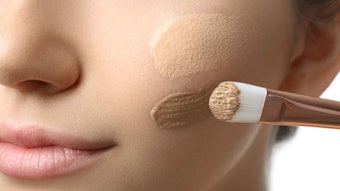The buying power of the ethnic market is increasing according to reports. In 2006, the US market for ethnic hair, beauty and cosmetic products reached US$1.9 billion, according to a Packaged Facts report. Ethnic skin and hair care is a growing niche market, but in comparison to hair care, skin care falls short, according to Patrick Obukowho, president and principal consulting chemist at Advantage Research Lab. Although he has seen the ethnic skin care market grow, he still sees room for improvement.
Biologically and functionally, all skin types are the same, according to Obukowho; the main difference, to him, lies in formulating for the factors related to ethnicity such as regional diets, genetic dispositions, pollution and weather. He therefore believes that formulating products for populations with ethnic skin is necessary. Obukowho consults primarily in the formulation of black skin care; therefore, this article will focus on that population within the ethnic market. One reason Obukowho believes that black skin care has not caught up with black hair care is the lack of research in regional skin care needs.
“I think the awareness of the need is there, but I don’t think this awareness is fully realized or that formulations are properly designed. There is still a lack of understanding of the technology that relates to the formulation of ethnic skin care products,” said Obukowho.
Moisturization
A primary focus in black skin care, according to Obukowho, is moisturization. “Moisturization is key in the black community because black skin is often dry,” he said. Although Obukowho concedes that the skin care research has not given cosmetic chemists all the answers as to why black skin is dry, he has observed that it is due to genetic makeup and environmental factors. According to Obukowho, for years people with black skin have relied on general skin care that promises extra moisturization. General skin care, however, is only a temporary dry skin fix for the black population, according to Obukowho.
“Long-lasting results are the key here. General products are not specifically addressing the ethnic population. They provide temporary moisturization, but the problem is not addressed over the long-term,” said Obukowho.
Better designed skin care formulas is one way Obukowho feels that skin care formulators can better serve ethnic consumers.
“Improving formulas so they do not conflict with the [environmental] conditions of the individual is a way to make ethnic skin care more effective,” said Obukowho. He went on further to say that a formulator cannot design a base for a product that conflicts with the active within that product. For example, a formula that promotes a hydrophobic ingredient on the skin, should stay away from surfactants so that the emulsion promotes the release of the hydrophobic material.
“Some of the formulas out there are based on simple formulation and the wrong ingredient selection,” he said. Overall knowledge of ingredients for ethnic skin, for Obukowho, is important. In terms of moisturization, Obukowho believes that petrolatum can be very effective in skin care formulations. He also finds benefit in lanolin, natural butters such as shea, and cocoa and peanut oils.
Pigmentation
Because of increased levels of melanin in skin, even pigmentation is often a goal of black skin care. Obukowho has seen a growth in the popularity of skin lighteners.
“Understanding the effectiveness of dramatic reduction of skin damage is being realized in the black community,” said Obukowho. Those with black skin often use skin lighteners to reduce pigment in areas that may be hyperpigmented as a result of acne or scarring.
With the banning of hydroquinone, a popular skin lightening ingredient, Obukowho believes research into alternative skin lightening formulations is now very timely.
Looking Forward
Obukowho believes that a partnership between dermatology and cosmetic chemistry may lead to more effective ethnic skin care. “Dermatologist are trained to individually evaluate patients based on their skin type, ethnicity and skin problems and choose ingredients based on that evaluation; this information could greatly benefit cosmetic chemists who are formulating products with little knowledge of their demographic,” said Obukowho. He believes that dermatologists could help formulators to better select the raw materials that are combined in products.
As far as raw materials go, Obukowho does not believe there are enough of them for ethnic skin care products. He noted that there is some research into new and effective raw materials for ethnic skin. An example of such research is recent studies on alternatives to hydroquinone, according to Obukowho, which have uncovered caprylic/capric triglyceride (and) diacetyl boldine and etholine, both of which target the removal of dark spots. Both ingredients have shown clinical data to suggest the effectiveness of these types of ingredients, a move Obukowho wishes more companies would accomplish. “Not too many suppliers have performed clinical studies on ethnic skin,” said Obukowho. In general, Obukowho believes there is absolutely a lack of skin care ingredients made for the ethnic population. With more research and better formulation, however, he is confident that will change.










